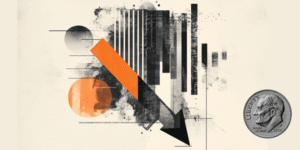With the help of JD Vance and his tie-breaking vote, Senate Republicans narrowly passed their version of the so-called “One Big Beautiful Bill Act” on Tuesday. It is projected to increase budget deficits by roughly $4 trillion over the next decade.
An analysis by the Committee for a Responsible Federal Budget (CRFB) using data from the nonpartisan Congressional Budget Office (CBO) found that the GOP package of tax cuts and spending would increase budget deficits by over $3.4 trillion from fiscal year 2025 to 2034.
After accounting for additional interest costs incurred through servicing a larger national debt, that figure would rise by about $700 billion over 10 years, raising total deficits to $4 trillion over the next decade.
Certain provisions in the legislation are scheduled to sunset to comply with congressional rules constraining the amount that deficits can increase under bills using the budget reconciliation process. If those temporary provisions were to be made permanent, deficits over the next 10 years would reach $5.5 trillion.
WHITE HOUSE PUSHES BACK ON ‘REMARKABLY LOW’ GDP FORECASTS FOR TRUMP-GOP TAX BILL
The U.S. national debt held by the public as a percentage of gross domestic product (GDP) — a metric favored by economists in comparing the nation’s debt burden to the size of its economy — is currently at 99% and projected to rise to 117% by 2034 under current law, though the One Big Beautiful Bill Act is projected to increase that.
The Senate’s version of the bill is projected to increase the debt as a percentage of GDP to 126% in 2034, though that figure would be 130% if temporary provisions are made permanent.
That’s slightly higher than the 124% debt as a share of GDP under the House-passed version of the bill.
SALT DEDUCTION WILL DO ‘NOTHING FOR 90% OF US TAXPAYERS,’ ECONOMISTS SAY

CRFB’s estimate also found that the Senate bill doesn’t comply with the House budget resolution’s reconciliation instructions, which established a lower limit of $4 trillion in tax cuts and $1.5 trillion over 10 years, with a target of $4.5 trillion in tax cuts coupled with $2 trillion in spending cuts in that period. The Senate-passed version of the bill would yield net tax cuts of about $4.45 trillion over a decade, coupled with roughly $1.35 trillion in spending cuts.
CRFB president Maya MacGuineas slammed the Senate-passed bill as showing “blatant disregard” for the country’s fiscal condition and said it was a “failure of responsible governing” that the House should reject.
“The Senate bill would add $600 billion to the deficit in 2027 alone, push deficits above 7% of GDP, drive debt to new record highs, and accelerate the insolvency of Social Security and Medicare,” MacGuineas said. “Claims that it reduces the deficits rely on phony baselines, fantastical economic assumptions and arbitrary expirations.”
HOW THE GOP’S ‘BIG, BEAUTIFUL BILL’ AFFECTS PELL GRANT ELIGIBILITY, FUNDING

The Trump administration and congressional Republicans have criticized cost estimates from CBO and other budget watchdog groups like CRFB, arguing that the deficit impact will be much smaller due to more pessimistic projections for economic growth.
“The fundamental issue that we have is the overly pessimistic forecast that the CBO has for GDP growth,” Joseph Lavornga, counselor to Treasury Secretary Scott Bessent, told FOX Business in a recent interview. “They’re assuming over the next 10 years the economy averages just 1.8% growth, which is remarkably low.”
“When you start off with such soft growth, by definition, you are going to get weak revenues, and therefore you will get larger deficits than what will actually come to pass,” Lavorgna added.
The bill will now head back to the House with Republicans looking to pass the bill ahead of a self-imposed Fourth of July deadline. If the House revises the Senate-passed version of the bill, it would need to be re-approved by the upper chamber before it goes to the president’s desk.
Read the full article here















